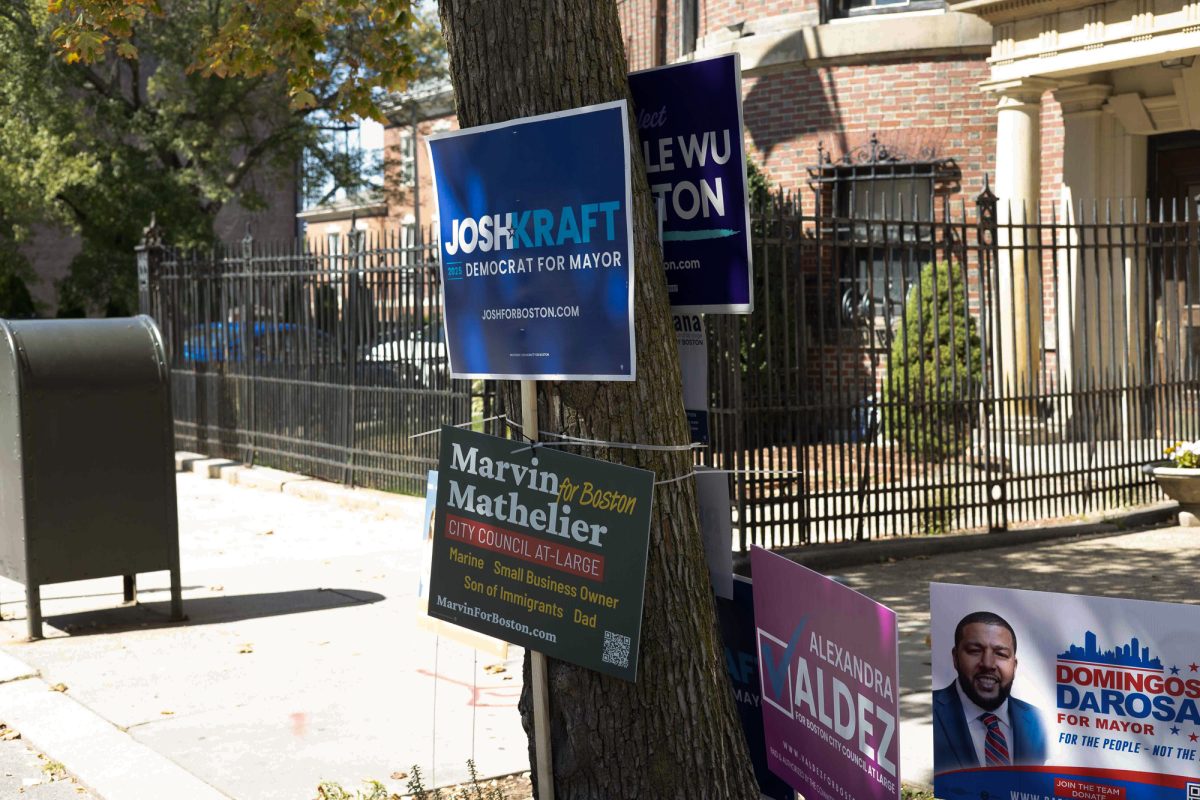An image of a braided, sling-wielding Bolivian woman down an empty street from a dozen armed policemen was projected on the wall of the College of General Studies Jacob Sleeper Auditorium Thursday evening.
‘This is the story of David and Goliath,’ James Shultz explained to an audience of about 150 people as part of a stop on his nationwide book tour for ‘Dignity and Defiance: Stories from Bolivia’s Challenge to Globalization.’
The projected photo was taken from the Cochabamba Water Revolt, in which Bolivian citizens and people from around the world protested increase in local water prices caused by the World Bank and the Bechtel Corporation, an engineering, construction and project management company, he said.
The revolt is one of eight stories in Shultz’s book highlighting the gap between theory and reality in United States-driven globalization policies, Shultz said.
‘What does this gap mean for you students?’ Shultz asked. ‘That as soon as you graduate, you need to get the hell out of here and go somewhere in this world and see what it means to live on the ground with what this country has to deliver, both good and bad, around the world.’
Shultz said he wants this book tour to promote changing U.S. foreign policy. The Water Revolt story is an illustration of change implemented by citizens, not institutions, he said.
Protesters in Bolivia successfully kicked Bechtel Corporation out of the country in 2000 after a subsidiary of Bechtel won a contract from the government to overhaul the country’s newly privatized water system and subsequently proposed increased water rates. Protestors also successfully demanded that the Bolivian government change the law that made the privatization of water and the contract between the government and Bechtel legal.
‘There are two sides of the coin of globalization,’ Shultz said. ‘One is the global institutions that put the people of Cochabamba in that situation. The other, the people around the world who used the globalization of justice to fight off Bechtel the second time.’
Melissa Draper, who co-edited the book, and Roberto Fern’aacute;ndez Ter’aacute;n, who contributed to the book, also shared their on-the-ground accounts from behind a podium draped in a woven Bolivian tapestry.
In addition to the spoken reports, a 10-minute video presentation projected 10-foot-tall footage of each of the eight stories. Graphic footage of a protestor who was fatally shot by a sniper, and a local farmer grabbing a dead sheep by its legs after an oil spill faded into images of finger-wagging demonstrators bearing the red, yellow and green stripes of the Bolivian flag. Each displayed some of the consequences of U.S. policy in Bolivia, Shultz said.
Brandeis University junior Nadine Channaoni, who spent her fall semester in Bolivia during a School for International Training cultural and development program, said what she had observed on the ground in Bolivia was very different from what she is being taught about the country in her university classroom. Shultz told her to not be afraid to speak up and refute any inaccurate academic theories.
‘I will definitely take his advice and use concrete examples from my experiences and not be too intimidated to speak up,’ Channaoni said.
University of Massachusetts-Boston senior Michelle Tracchia said she was drawn to the event because of her research on the effects of World Bank and International Monetary Fund policies concerning water access in the African country of Senegal.’
‘I wanted to understand why the people of Bolivia were able to revolt and not Senegal,’ Tracchia said. ‘It was really important for me to hear from people living in the U.S. and Bolivia because there is so much more to take from their experience in both.’















































































































